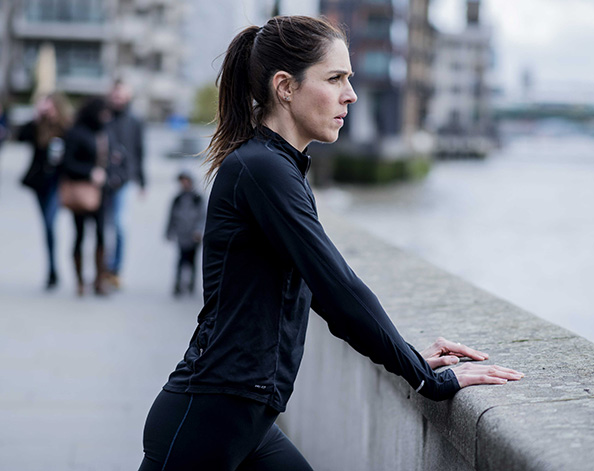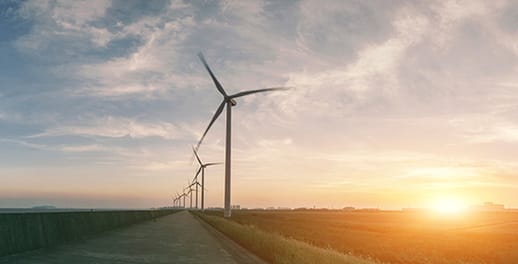Receive Focus insights straight to your inbox
I’m ashamed and embarrassed to admit that air pollution isn’t something that I have given much thought to. Life is busy – with work and three children – and there is little time to consider the impact that the air we share is having on us. If I’m being honest, I’ll often look at a cyclist or passer-by wearing a face mask and think they’re either crazy, or they know something I don’t, but I just don’t have the time to commit to understanding air pollution and its impact.
My days are hectic – up at 5:45am, getting packed lunches prepared, making sure the kids have a healthy-ish breakfast, dropping the kids at the bus stop at 7:20am and onto my daily commute into the City. I don’t get home before 7pm and then it’s time for dinner, checking the homework’s been completed and reading with my youngest.
Gasp: the impact of air pollution
So when I was asked to get involved with the Air we Share project, I jumped at the opportunity. My foray into the world of air pollution commenced with a meeting with Andrew Grieve, senior air quality analyst at King’s College London (KCL) and the team at Hubbub, the environmental charity. Andrew is a key member of the Environmental Research Group at KCL and a walking encyclopedia on air pollution, the impact it has on us, what’s currently in place to tackle it, and what should be done if we’re going to make a difference.
He started talking about particulate matter, PM 2.5, micrograms per cubic meter, ULEZ, black carbon, nitrogen oxide and World Health Organisation (WHO) recommended limits. I quickly realised how little I knew about air pollution, which resulted in a desire to learn as much as I could.
A few days later, I was at Hubbub’s offices for the launch of the Air We Share campaign. I received my air pollution monitor, which would constantly be by my side for the next week. It was larger than I thought – the size of a mini cereal packet, but much heavier and attached to a black plastic tube, which I fixed to my clothing. The launch also gave me the opportunity to meet some of the other volunteers, including Dean, a lorry driver, Ashley, a construction engineer, and Ruth and her children who attend a primary school in Tower Hamlets.
My monitor would be detecting levels of black carbon, which is a component of fine particulates such as PM 2.5 – which is harmful to us. PM is an abbreviation of particulate matter and 2.5 denotes the size of the particulate matter – 2.5 particles are particularly tiny and therefore able to travel deep into our respiratory tracts.
As I walked out onto the Strand with my monitor fixed to my coat, I was instantly aware of the fumes being omitted from a lorry as I crossed Waterloo Bridge, as well as cigarette smoke from a passer-by. I made my way to Charing Cross underground station, which I thought would be a refuge from the vehicle pollution engulfing me.
Over the next week, I kept my monitor at my side at all times. In the mornings when I left my house, I would check on my monitor as if it was my fourth child for the week! I kept a detailed diary of all my movements – the times I left home, got on the underground, arrived at the office, went for a run, took a taxi to an event, etc. My colleagues at work asked what the blue box with the long black tube was, as did my children. It prompted interesting conversations about air pollution, and how little we all know about its effects.
I also spent the week researching air pollution and was confronted with some alarming statistics. It’s estimated that air pollutants cause 28,000 – 36,000 premature deaths a year1, with 10% of hospital asthma admissions for children in London linked to adverse responses to air pollution. What’s more, teenagers living on polluted roads are about 30% more likely to be affected by psychosis2, and poor air quality can also contribute to dementia and depression3. Shocking!
A more expected impact is that fine particles and nitrous oxides in the air can cause heart problems and difficulty breathing, with air pollution causing more deaths globally than smoking4.

It’s clear that everyone has an individual responsibility – driving less frequently, walking as often as possible, avoiding lighting those scented candles. But what about our governments, what are they doing? It sounds like not enough!
Taking my breath away: the results
I was both excited and worried about receiving my results. What struck me at first was the huge spike in my exposure to black carbon while on my daily commute on the Northern Line. The levels of black carbon on the underground jumped up to more than 125 ug/m3, which is worrying considering the levels at home and in the office are negligible, much lower than the WHO recommended limits of 10 ug/m3.
I was confused as I thought air pollution came from cars, homes, and factories. I have since learned that the main pollutant on the underground is from iron oxide – the ‘stuff’ that comes off the wheels of the trains. Of course, there’s nowhere for this pollutant to go so it just builds up day by day, along with the skin particles from the millions of commuters and the fumes being pumped in from up above on the roads.
I’ve often come out from a journey on the tube, blown my nose and it’s black and now I know why! I made a few journeys on the Metropolitan and Jubilee Lines, which included above-ground parts and the levels were almost half on these occasions.
Surprisingly, while walking to meetings in the City, the monitor recorded lower levels than I had anticipated – around 20 ug/m3, but I’m sure I could have reduced this further by walking away from main roads. A taxi along the Strand and Trafalgar Square with colleagues one evening to an event also showed relatively low levels.
Some other shocking results included when I lit a scented candle at home one evening, which saw a significant spike of up to 100 ug/m3. My monitor also picked up a spike in air pollution in the sports hall of my daughter’s school in north London while I attended parents' evening.
Catching my breath: next steps
Since my involvement in this project, I have completely changed my approach to air pollution. This is something that none of us can ignore. It affects each and every one of us, no matter where we live or what we do.
Where does the responsibility lie for sorting this out? It’s clear that everyone has an individual responsibility – driving less frequently, walking as often as possible, avoiding lighting those scented candles. But what about our governments, what are they doing? It sounds like not enough! Did you know that we regularly breach WHO recommended limits of 10 ug/m3 and that Client Earth has won three cases recently against the UK government over the country’s illegal and harmful levels of air pollution?
Ben Webster, environment editor at The Times, was also a participant in the Air we Share project. He published my results, along with his own and four other volunteers in an article on 9 May. I have shared this with friends and colleagues and have been really pleased by their reactions. One of our private bankers has started walking to work instead of taking the tube, friends have thought twice about lighting those scented candles.
On a personal level, I will try my hardest to avoid the Northern Line – choosing to run to work more often or run part of the way and take the Overground. This is something that I can no longer ignore. That none of us can ignore.




